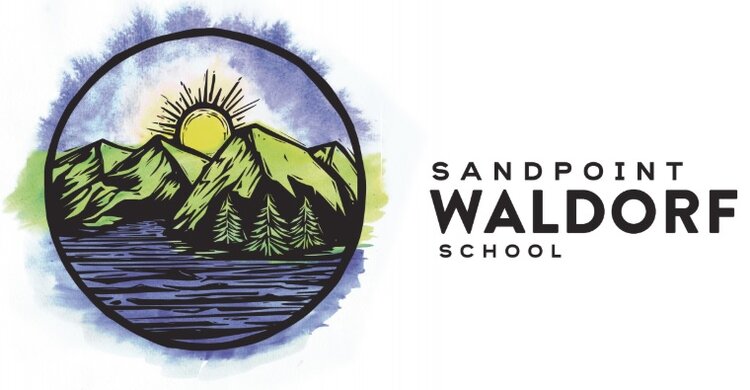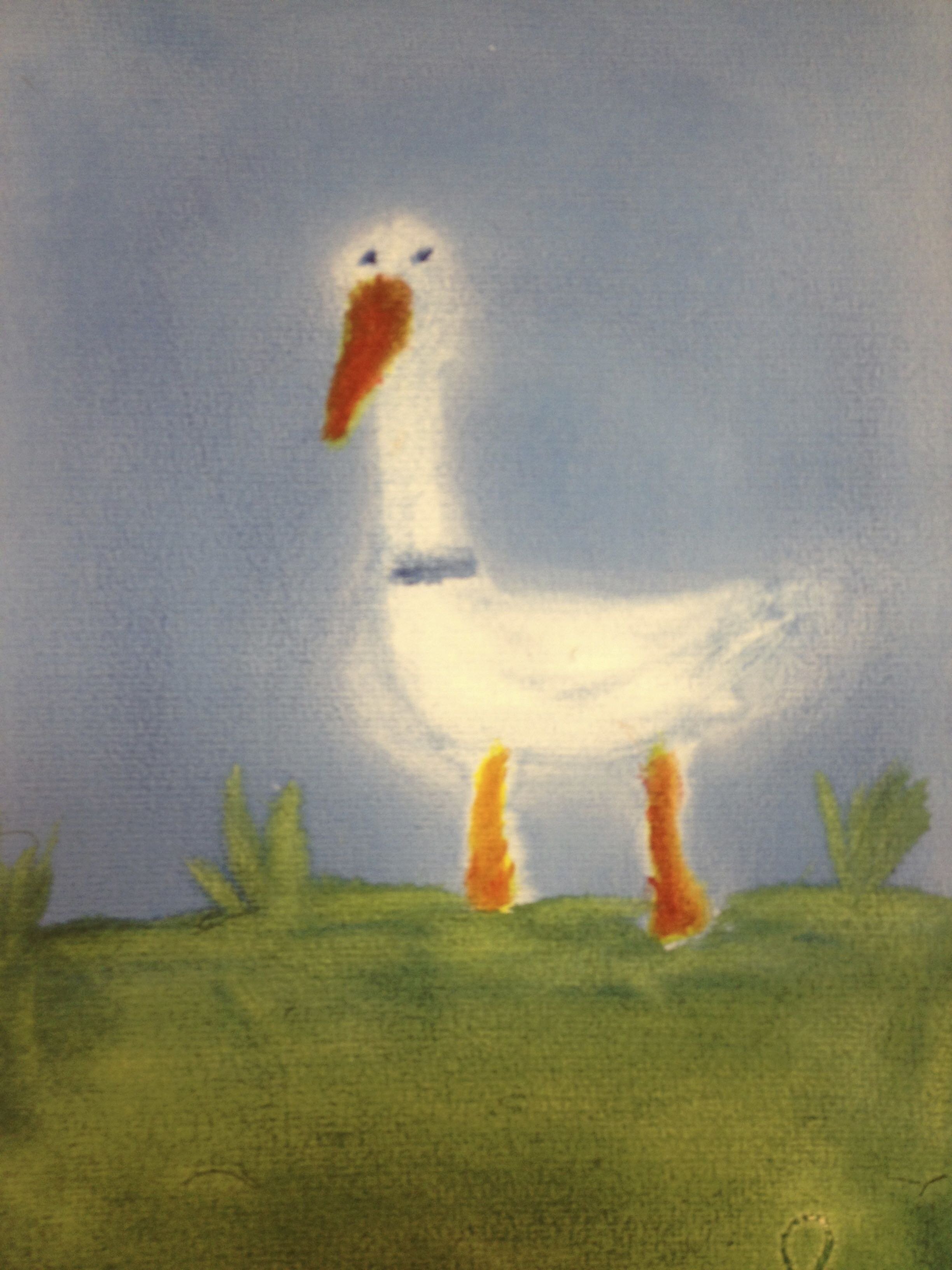Lower Grades
First Grade
The first grade is a time of awakening to the wonders of literature, music, knitting, movement, numbers and letters, painting, drawing and writing, and foreign language. The basic mode of learning for the first grade student comes through picture images, stories, and rhythmic movement.
Out of the wealth of fairy tales from all over the world come the picture images which lead to an introduction of the letters. For example, from the story The Fisherman and his Wife can come the letter W sprouting out of the waves and an F emerging from the fish. The letters are presented in the same manner as language itself developed – from picture to hieroglyphic to symbol. The children hear the stories, draw the pictures, paint and draw the forms, then write the letters. The writing of words follows letter learning, and from these words reading is introduced.
These same principles are used in the teaching of song, dance, circle games, and flute playing, as well as mathematics. Students are introduced to the processes of addition, subtraction, multiplication, and division, the qualities of numbers, and rhythmic counting. Concepts combined with movement, the imagination, and artistic activities serve to enhance the learning process and integrate the entire curriculum.
A loving artistic atmosphere surrounds the students in grade one as the teacher guides them to develop the joy of learning and a respect for one another and the world around them.
Second Grade
The second grade builds upon the foundations laid in the first grade. Learning continues through picture images, rhythmic movement, music, art, games, foreign language study, and handwork. Longer, more complex fairy tales and nature stories are told along with fables, legends, local folklore, and stories about the lives of saints. The animals in the fables of Aesop and La Fontaine illustrate the different aspects of human nature, whether noble or cowardly, vulnerable or strong.
Reading and writing instruction evolves from these classical stories and legends. Work with the four basic math processes continues and progresses to mental arithmetic, carrying, and borrowing. Multiplication tables are introduced through rhythmic movement. Crafts, games, music, foreign language and nature walks complete a well-rounded curriculum that focuses on the whole child.
Third Grade
Life takes on a different quality in the third grade. Just as fairy tales in the first grade and fables and legends in the second grade nourished the children, so do stories from the Old Testament form a treasury of sustenance for third grade students. The powerful story of the casting out of Adam and Eve from the Garden closely parallels the third grade child’s own experiences; she leaves behind the paradise of early childhood as she becomes more aware of good and evil. Third grade students grapple with their earthly existence through experiences of farming, clothing, housing, and social relationships.
The study of farming and gardening is a fun filled block that develops an awareness and understanding of the interrelationships of all forms of life. Planting, harvesting, cooking, and composting all bring a sense of wonder and delight. Making butter, grinding wheat, and baking bread are a few of the meaningful activities brought to our third grade children.
The study of animal and human shelters, emphasizing different times and climates, develops an understanding of animal’s and man’s creativity and their use of materials and tools. Students make models of shelters and frequently do some real construction. Practical domestic arts are visited such a soap making or the processing of wool from sheep to shawl.
The basic theme of practical life is integrated into all subjects. Students begin regular library visits and read about the things they are experiencing. Cursive writing is introduced and the study of grammar, spelling, and punctuation commences. The composition of original stories becomes the focus of writing. Students study time, money, weights and measures, all used as tools in dealing with life.
Children of this age have an innate feeling of awe and wonder for the world and are alive to the magic of nature. Nature stories abound in the third grade, and students experience nature first hand with walks and trips to forest, field, and stream. Much information is transmitted through these studies, and an important goal is to develop a positive attitude toward nature.
Third grade students have several specialty classes including foreign language, handwork, movement, and music. Singing instruction continues, and the diatonic flute and traditional musical notation are introduced.
Fourth Grade
Between nine and ten years of age children begin to awaken to a new independence in their feeling life. This is a turning point, when basic attitudes formed about themselves and the world may very well be carried through life. In the fourth grade students study the human being as mirrored in the animal kingdom, and they learn to feel in themselves the qualities that each animal has developed as its own: the fierce clarity of the eagle, the courage and enormous heart-breathing system of the lion, the open, sensitive feeling of the mouse with its rapid breathing, the loving calmness and powerful metabolic system of the cow and buffalo. The children can feel in themselves the balance of all these qualities.
But unlike the animal, man stands upright with free hands and can adapt to many different environments. He thinks and laughs, and he has self-consciousness. Several themes run through the man and animal blocks, but a common thread is to gain insight into the human being and to develop a love and responsibility for the animal kingdom. With their new awareness students will dramatize different animals, paint and sketch them, and write descriptions of them in their main lesson books. Consequently, the introduction to the study of nature and science is imaginative and artistic.
Also in the realm of feeling are studies of the Norse, Celtic, and Finnish myths. The mighty characters of Thor, Odin, and the cunning Loki move through Middle Earth to their last battle Ragnorak, the twilight of the gods, the end and the beginning of all things. As they listen to these powerful stories fourth grade students experience the same full range of emotions that they are beginning to experience and apply independently in their own lives.
Norse Mythology is integrated into form drawing as students sketch the weaving designs, symbols, and decorative motifs of the Norse people or the Celts.
Geography is introduced in the fourth grade, and study begins locally. Initially students draw maps of the classroom, the school building, and their route to school. They gradually branch out to their town, county, and state. Geography is experienced in a very real way. Students delight in stories of local towns, mountain ranges, deserts, great valleys, the coastal regions. Crops, minerals, and water resources become alive in these places, a part of their inner space.
Reading is an important activity in the fourth grade, and composition and grammar are emphasized. Math problems become more complicated and fractions and decimals are introduced. Cross-stitching commences in handwork and meter and time signatures are presented in music. Painting, games, gardening, foreign languages, and eurythmy keep fourth grade students very busy.





